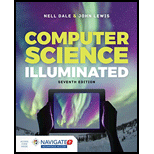
Check digit:
- The digits in the number are added together, and the unit digit of the result is called as check digit, which is used for error detection.
- The unit’s digit of that sum is stored with the number.
- The additional digit is used along with the check digit to find out the transposition error, and it can be found out by the sum of even digits or odd digits in the number.
For example,
Consider the number 3422.
It is stored as 3422-16.
- Count the numbers from left to right; it produces the sum of the digits as 11.
- Here, “1” is the unit’s digit of the sum of all the digits, which is called as check bit.
- “6” is the unit’s digit of the sum of the second and fourth digits (4+2 = 6), which is the additional digit used along with the check digit.
- While storing the above number 3422-16, if “2” is corrupted by “4” and “4” is corrupted by “2”, it leads to a transposition error. So, the number is received as 3242-16 ,
- By adding the number, it produces the check digit as “1” and it produces the additional digit as “4”.
- But the received additional digit is “6”. Hence, it is clear that the received number is corrupted.
Explanation of Solution
a.
Find the additional digit using the sum of even digits for “1066” numbers:
The additional digit (using the sum of even digits) for the number 1066 can be determined by the following steps:
Check digit:
- Step 1: Count the given number from left to right.
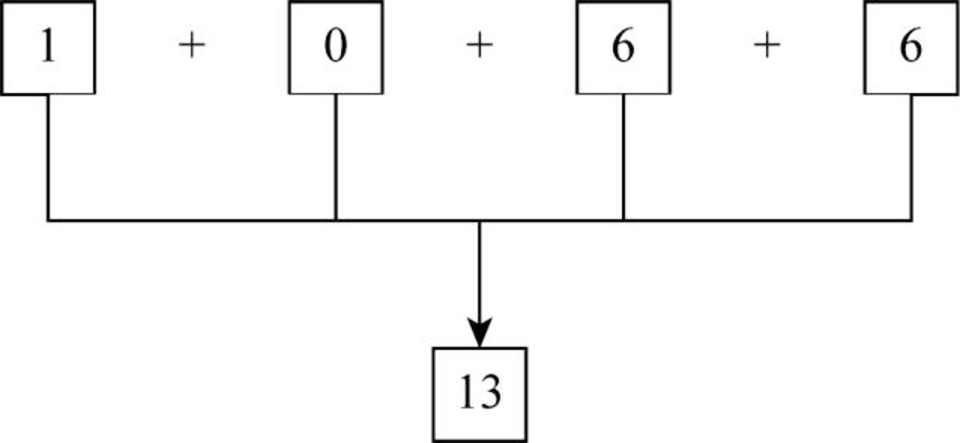
- Step 2: From the above diagram, the sum of digits produces the result as 13.
- Step 3: The unit’s place in the sum represents the check digit. Thus, “3” is in the unit’s place.
- Step 4: Therefore, check digit for the number 1066 is 3.
Additional digit:
- Step 1: In the given number 1066, take the numbers from the even position from left to right.
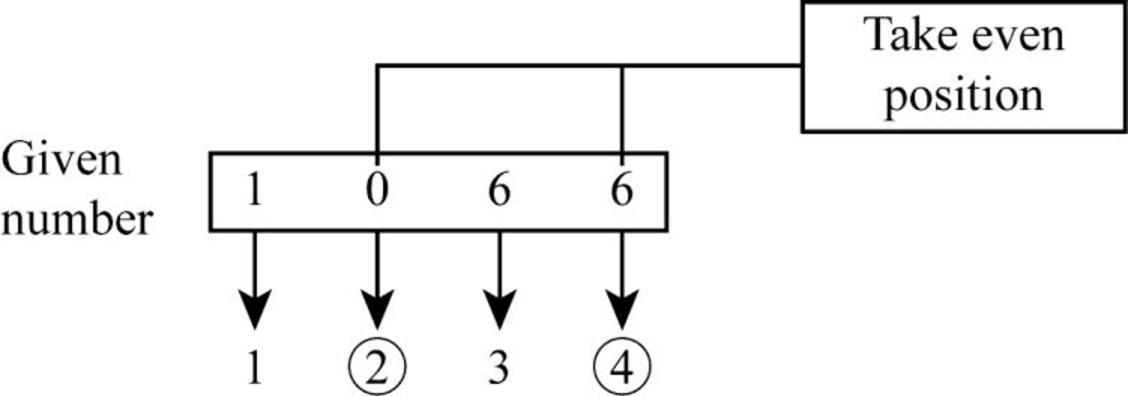
- Step 2: From the above diagram, it is clear that the number “0” on second position and the number “6” on fourth position are the even position numbers.
- Step 3: The sum of digits produces the result as “6” (0+6 = 6).
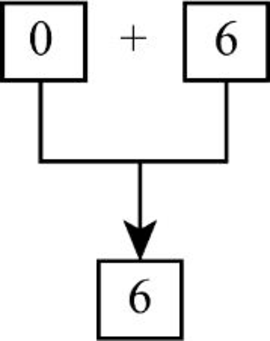
- Step 4: Hence, “6” in the unit’s place is the additional digit used along with the check digit.
Therefore, additional digit used along with the check digit “3” for the number 1066 is “6”.
Explanation of Solution
b.
Find the additional digit using the sum of even digits for “1498” numbers:
The additional digit (using the sum of even digits) for the number 1498 can be determined by the following steps:
Check digit:
- Step 1: Count the given number from left to right.
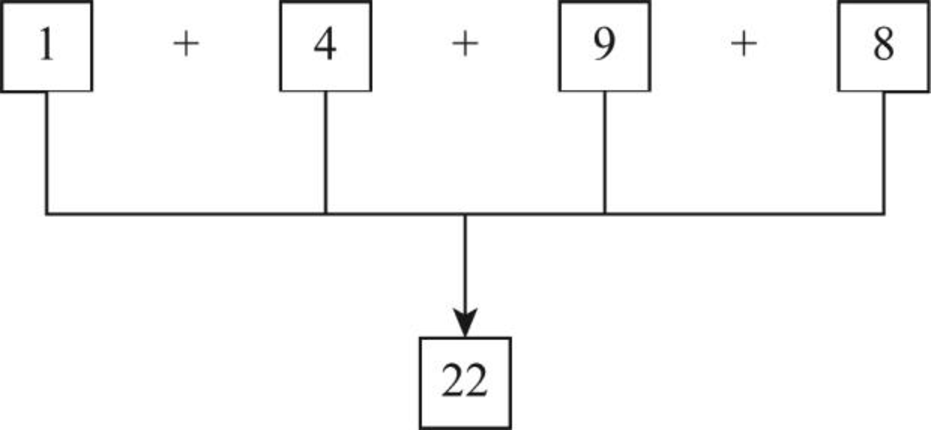
- Step 2: From the above diagram, the sum of digits produces the result as 22.
- Step 3: The unit’s place in the sum represents the check digit. Thus, “2” is in the unit’s place.
- Step 4: Therefore, check digit for the number 1498 is 2.
Additional digit:
- Step 1: In the given number 1498, take the numbers from the even position from left to right.
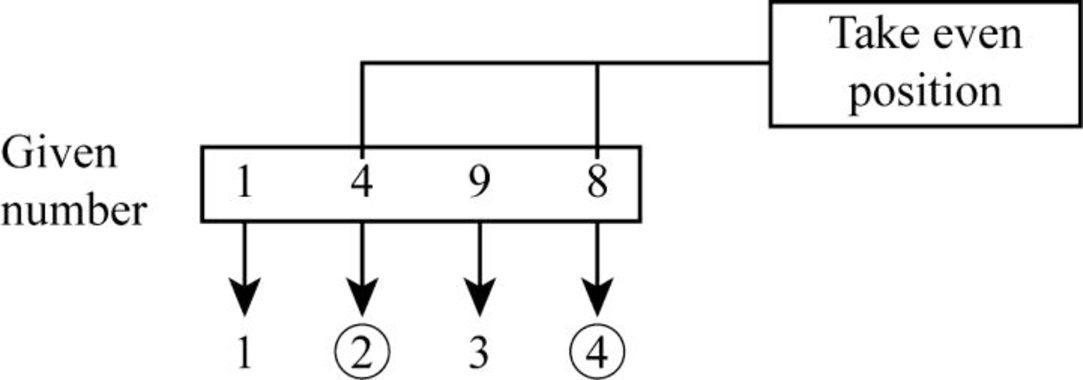
- Step 2: From the above diagram, it clearly states that the number “4” on second position and the number “8” on fourth position are the even position numbers.
- Step3: The sum of digits produces the result as “12” (4+8 = 12).
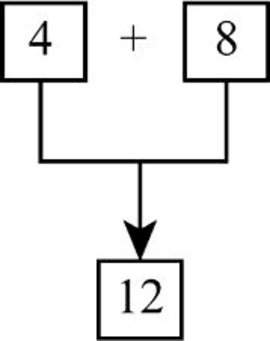
- Step4: Hence, “2” in the unit’s place is the additional digit used along with the check digit.
Therefore, additional digit used along with the check digit “2” for the number 1498 is “2”.
Explanation of Solution
c.
Find the additional digit using the sum of even digits for “1668” numbers:
The additional digit (using the sum of even digits) for the number 1668 can be determined by the following steps:
Check digit:
- Step 1: Count the given number from left to right.
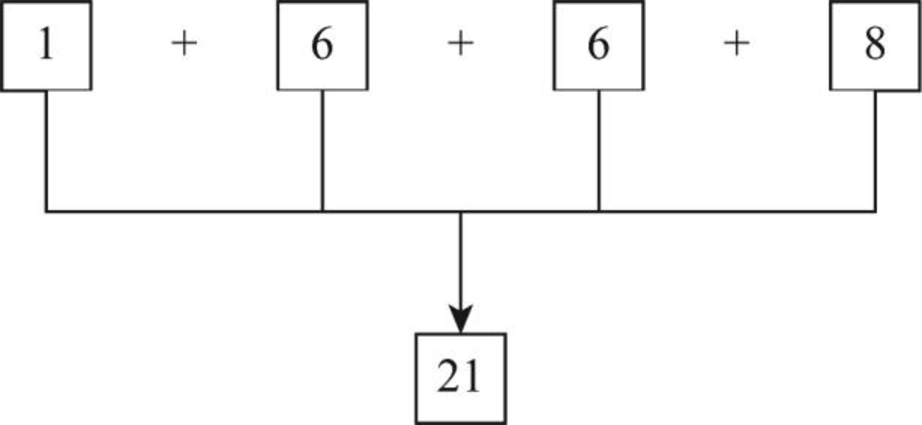
- Step 2: From the above diagram, the sum of digits produces the result as 21.
- Step 3: The unit’s place in the sum represents the check digit. Thus, “1” is in the unit’s place.
- Step 4: Therefore, check digit for the number 1668 is 1.
Additional digit:
- Step 1: In the given number 1668, take the numbers from the even position from left to right.
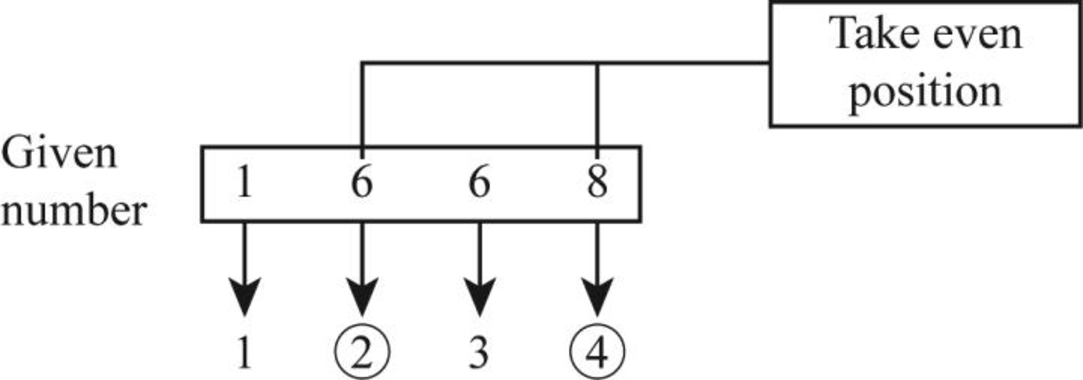
- Step 2: From the above diagram, it is clear that the number “6” on second position and the number “8” on fourth position are the even position numbers.
- Step 3: The sum of digits produces the result as “14” (6+8 = 14).
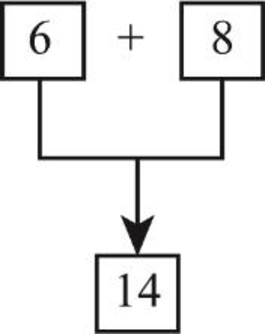
- Step 4: Hence, “4” in the unit’s place is the additional digit used along with the check digit.
Therefore, additional digit used along with the check digit “1” for the number 1668 is “4”.
Explanation of Solution
d.
Find the additional digit using the sum of even digits for “2001” numbers:
The additional digit (using the sum of even digits) for the number 2001 can be determined by the following steps:
Check digit:
- Step 1: Count the given number from left to right.

- Step 2: From the above diagram, the sum of digits produces the result as 3.
- Step 3: The unit’s place in the sum represents the check digit. Thus, “3” is in the unit’s place.
- Step 4: Therefore, check digit for the number 2001 is 3.
Additional digit:
- Step 1: In the given number 2001, take the numbers from the even position from left to right.

- Step 2: From the above diagram, it is clear that the number “0” on second position and the number “1” on fourth position are the even position numbers.
- Step 3: The sum of digits produces the result as “1” (0+1 = 1).
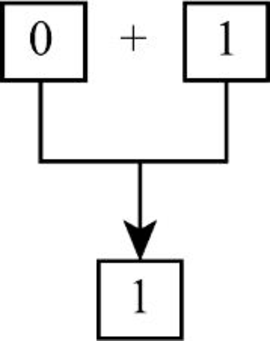
- Step 4: Hence, “1” in the unit’s place is the additional digit used along with the check digit.
Therefore, additional digit used along with the check digit “3” for the number 2001 is “1”.
Explanation of Solution
e.
Find the additional digit using the sum of even digits for “4040” numbers:
The additional digit (using the sum of even digits) for the number 4040 can be determined by the following steps:
Check digit:
- Step 1: Count the given number from left to right.
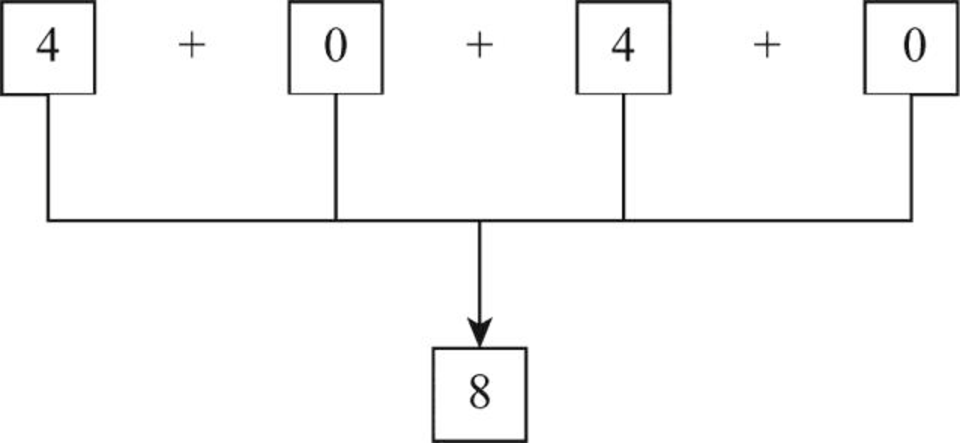
- Step 2: From the above diagram, the sum of digits produces the result as 8.
- Step 3: The unit’s place in the sum represents the check digit. Thus, “8” is in the unit’s place.
- Step 4: Therefore, check digit for the number 4040 is 8.
Additional digit:
- Step 1: In the given number 4040, take the numbers from the even position from left to right.
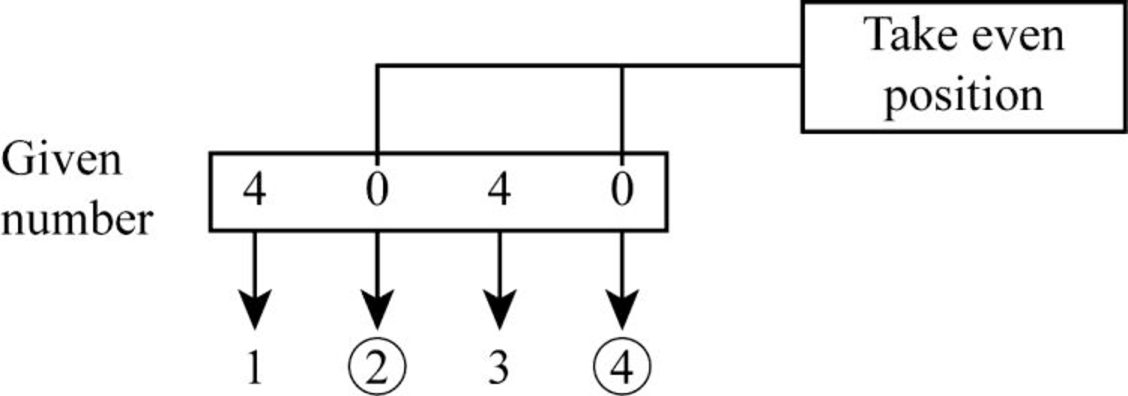
- Step 2: From the above diagram, it is clear that the number “0” on second position and the number “8” on fourth position are the even position numbers.
- Step3: The sum of digits produces the result as “0” (0+0 = 0).
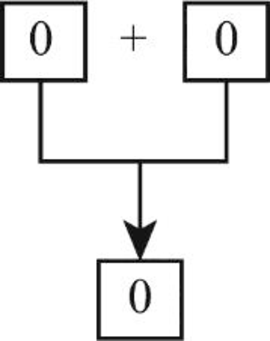
- Step 4: Hence, “0” in the unit’s place is the additional digit used along with the check digit.
Therefore, additional digit used along with the check digit “8” for the number 4040 is “0”.
Want to see more full solutions like this?
Chapter 18 Solutions
COMPUTER SCIENCE ILLUMIN.-TEXT
- Write the following in C# WinForms. Implement a function in the main menu that makes the poacher move to random directions. The movement should seem seamless. The poacher can be drew by the following in the main menu. e.Graphics.DrawImage(poacherImage, poacher.X, poacherY, tileSize, tileSize);arrow_forwardWrite the following in C# WinForms. Create a poacher class that has random x and y values when created, private set function for x and y values. Implement a function in the main menu that makes the poacher move into random direction. The movement should seem seamless. The poacher can be drew by the following in the main menu. e.Graphics.DrawImage(poacherImage, poacher.X, poacherY, tileSize, tileSize); Write the following in C# WinForms. Create a poacher class that has random x and y values when created, private set function for x and y values. Implement a function in the main menu that makes the poacher move into random direction. The movement should seem seamless. The poacher can be drew by the following in the main menu. e.Graphics.DrawImage(poacherImage, poacher.X, poacherY, tileSize, tileSize);arrow_forwardWrite the following in C# WinForms. Create a poacher class that has random x and y values when created, private set function for x and y values. Implement a function in the main menu that makes the poacher move into random direction. The movement should seem seamless. The poacher can be drew by the following in the main menu. e.Graphics.DrawImage(poacherImage, poacher.X, poacherY, tileSize, tileSize);arrow_forward
- Write the following in C# WinForms. Create a poacher class that has random x and y values when created, private set function for x and y values. Implement a function in the main menu that makes the poacher move into random direction. The movement should seem seamless. The picture of the poacher is drew by e.Graphics.DrawImage(poacherImage, poacher.X, poacher.Y, tileSize, tileSize);arrow_forwardCreate a poacher class that has random x and y values when created, private set function for x and y values, and implement a function in the main menu that makes the poacher move into random direction. The movement should seem seamless. Write it in C# WinFormsarrow_forwardHi, please solve this trying to follow this criteria. (use Keil) Abstract describing the requirements and goals of the assignment. List file with no errors or warnings. Brief description of your implementation design and code. Debugging screen shots for different scenarios with your reference and comments. Conclusionarrow_forward
- Compute a Monte Carlo estimate of 0.8 by sampling from Uniform(0,0.8) and estimate the variance of ⑦.arrow_forwardWrite a C program using embedded assembler with a function to convert a digit (0 – 15) to the corresponding ASCII character representing the value in hexadecimal. For numbers 0 – 9, the output will be the characters '0' – '9', for numbers 10 – 15 the characters 'A' – 'F'. The entire core of the program must be written in symbolic instruction language; arrays may not be used. You may only use C to print the result. Tip: This piece of C program will do the same thing: character = number < 10 ? number + '0' : number + 55; As a basis, you can use this program again , which increments a variable. Just replace the INC instruction with ADD and add a test (CMP) with some conditional jump.arrow_forwardAnswer the question fully and accurately by providing the required files(Java Code, Two output files and written answers to questions 1-3 in a word document)meaning question 1 to 3 also provide correct answers for those questions.(note: this quetion is not graded).arrow_forward
 Database System ConceptsComputer ScienceISBN:9780078022159Author:Abraham Silberschatz Professor, Henry F. Korth, S. SudarshanPublisher:McGraw-Hill Education
Database System ConceptsComputer ScienceISBN:9780078022159Author:Abraham Silberschatz Professor, Henry F. Korth, S. SudarshanPublisher:McGraw-Hill Education Starting Out with Python (4th Edition)Computer ScienceISBN:9780134444321Author:Tony GaddisPublisher:PEARSON
Starting Out with Python (4th Edition)Computer ScienceISBN:9780134444321Author:Tony GaddisPublisher:PEARSON Digital Fundamentals (11th Edition)Computer ScienceISBN:9780132737968Author:Thomas L. FloydPublisher:PEARSON
Digital Fundamentals (11th Edition)Computer ScienceISBN:9780132737968Author:Thomas L. FloydPublisher:PEARSON C How to Program (8th Edition)Computer ScienceISBN:9780133976892Author:Paul J. Deitel, Harvey DeitelPublisher:PEARSON
C How to Program (8th Edition)Computer ScienceISBN:9780133976892Author:Paul J. Deitel, Harvey DeitelPublisher:PEARSON Database Systems: Design, Implementation, & Manag...Computer ScienceISBN:9781337627900Author:Carlos Coronel, Steven MorrisPublisher:Cengage Learning
Database Systems: Design, Implementation, & Manag...Computer ScienceISBN:9781337627900Author:Carlos Coronel, Steven MorrisPublisher:Cengage Learning Programmable Logic ControllersComputer ScienceISBN:9780073373843Author:Frank D. PetruzellaPublisher:McGraw-Hill Education
Programmable Logic ControllersComputer ScienceISBN:9780073373843Author:Frank D. PetruzellaPublisher:McGraw-Hill Education





